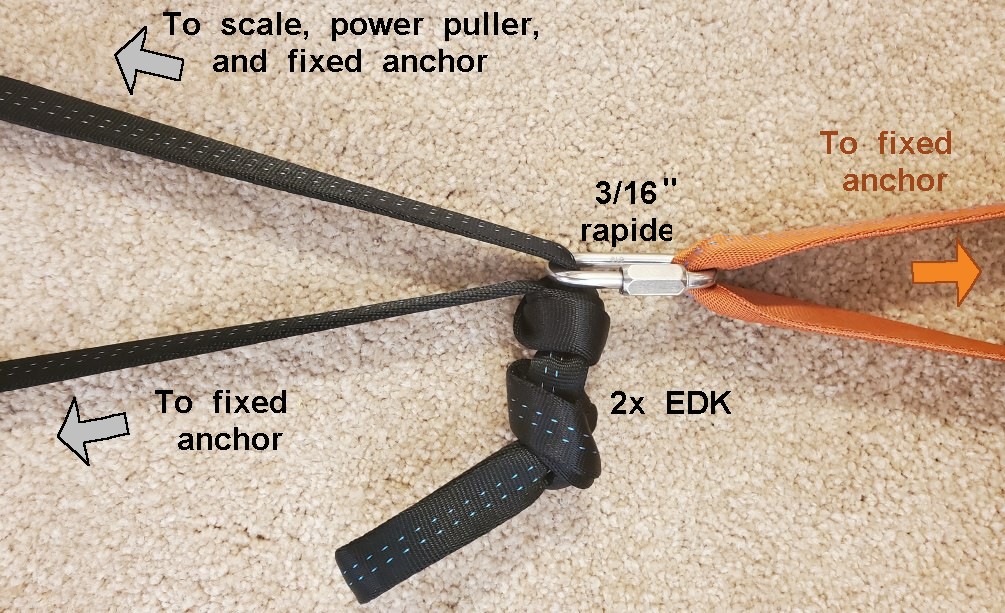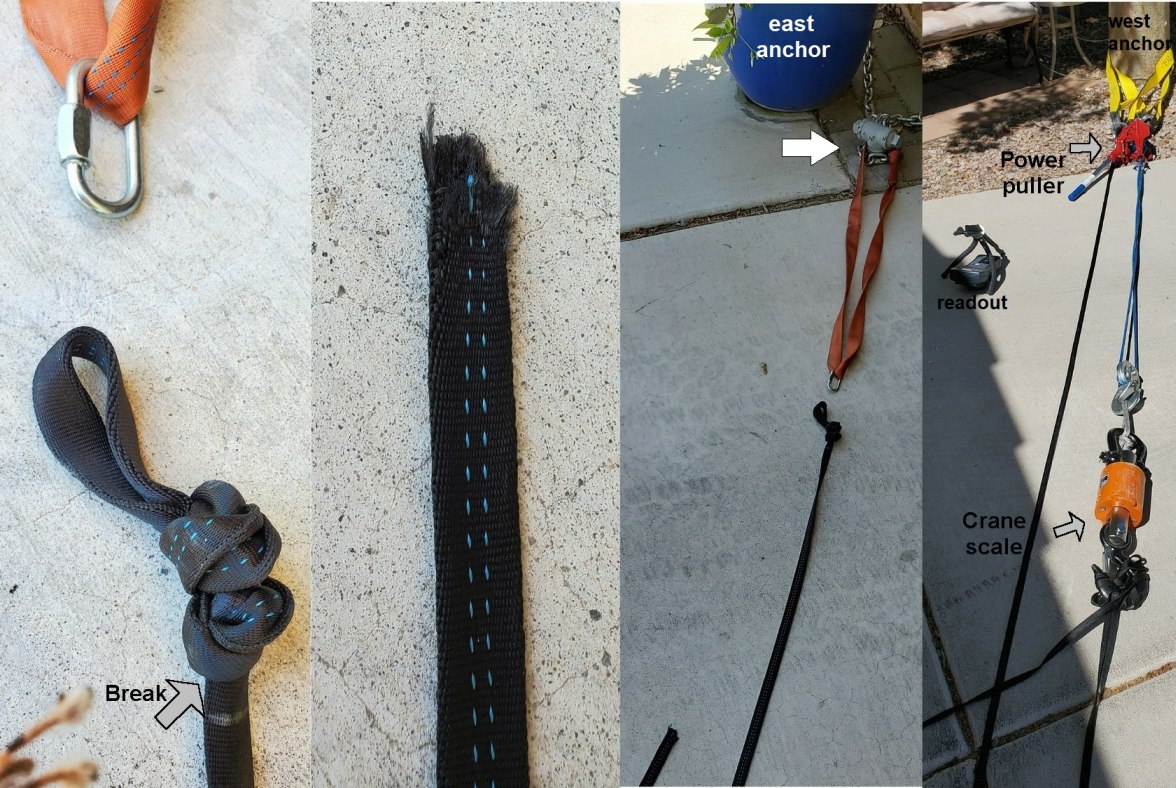I
use 15mm webbing for handlines, and occasional “easy terrain” rappels.
There are times when I have to join two pieces of webbing through a
small quicklink, and it is often easier to tie a flat overhand (the
dreaded EDK) to join two strands rather than tie a water knot/ ring
bend.
But the ACA advises against using an EDK for webbing. It is
important to note that the geometry proposed in this note is
topologically similar to the ACA testing, but is very different in
terms of force directions. I use the double EDK in webbing right
against a small quicklink, and use the two lines for the rap, each
taking half my body weight. The two strands do not come from the knot
at a 180 degree angle, as in the ACA testing. The knot tends naturally
to ride up to the quicklink in the rap.
Below is a schematic of my setup, followed by a figure to show the real setup after the webbing broke.


I was not sure the EDK would keep all the load on one side for the
entire experiment, so in my experiment, the “load cell” (crane scale),
and the source of force, was placed on the leg “opposite” the EDK, and
the other strand of the webbing was fixed to a tree. The webbing was
attached to the anchors by wrapping it 5 times around a ¾” shackle or hook and
tying off the ends with a few half-hitches—effectively this is a
capstan clamp for each strand on the west side anchors (the shackle
was in the end of a tree-saver strap, the other wrap was on the power-puller hook).
The webbing broke just inside the knot, at the exit from the EDK, at
1236 lbs. The strength of the webbings is given variously as 2023 to
2300* lbs; using the latter, the webbing broke at 54% of the native
strength. This much higher than the ACA results of 29 %. Added to the division of body weight on two strands in rappel, one without the EDK, this is a relatively safe procedure.
* Note ”15 mm” webbing varies quite a bit in mass/length; this
particular webbing is actually 16 mm wide. Over the years REI has
labelled the thin Bluewater webbing variously as 15mm, 9/16”, and 5/8”
(the last is ~16mm).

